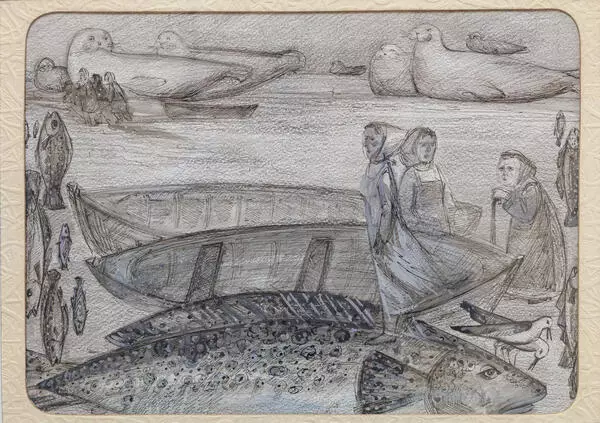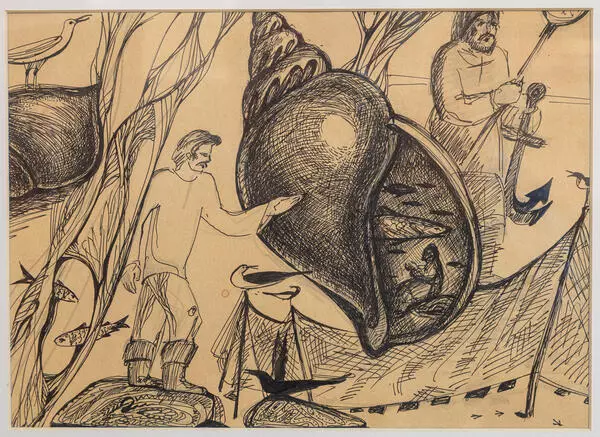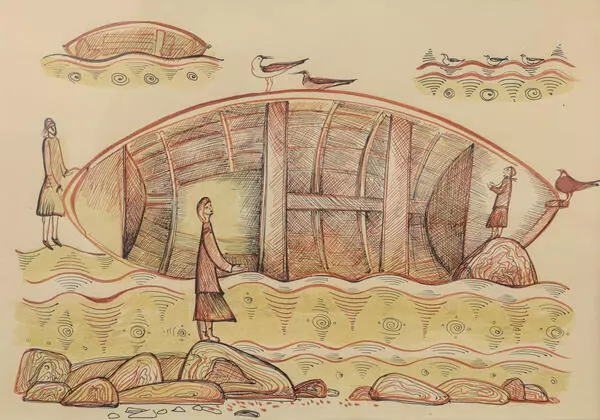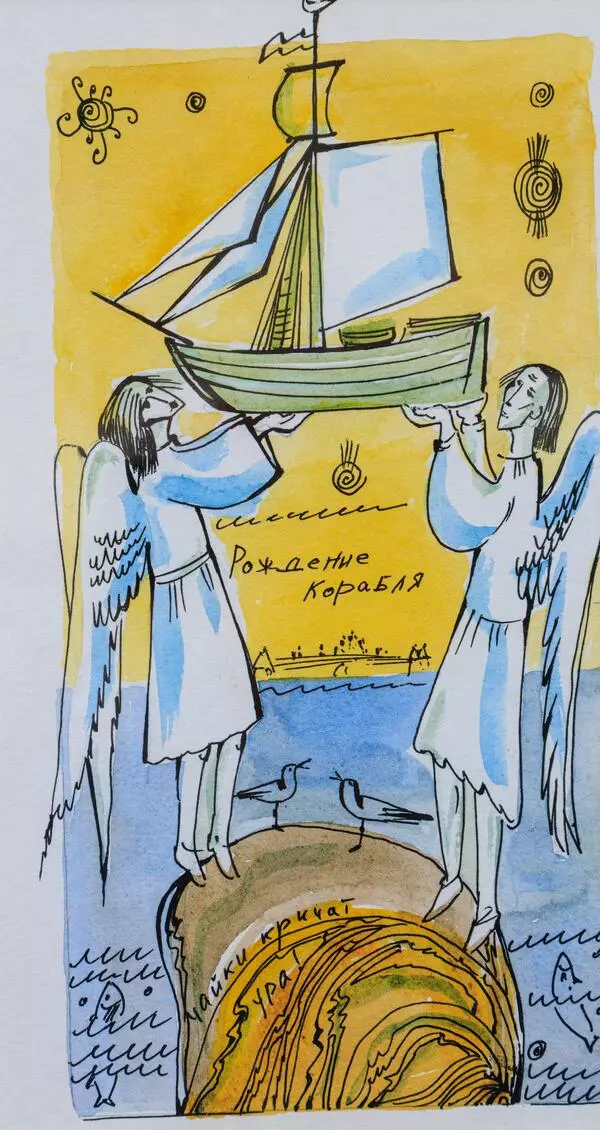Pomor fishermen and their wives are the most popular characters of Ekaterina Sedacheva’s graphic works. The artist creates fantastic stories based on traditional Pomor culture.
In the picture “Fishing with Hands, Fishing with Nets” Sedacheva depicted a fisherman in a boat: he leans over the side of the boat holding a huge fish with both hands. There are several seagulls on top of the boat — these birds were considered constant companions of sailors. According to popular beliefs, they brought good luck or warned of misfortune.
The wide blue band in the center symbolizes the sea. The smaller fish are below. And in the lower part of the picture, the artist depicted three more boats: two boats with one person and one boat with two men casting a fishing net.
Fishing was one of the main Pomor trades. Most of the fish was sold, and the rest was used for food — it was boiled, fried, baked, used as a filling in a pie, salted and dried for future use. Sometimes fatty dried fish were even used as fuel: it burned well and gave as much heat as firewood.
The fishing grounds had owners who could lease them, sell them, pawn them as a whole or in parts, and also bequeath them to their descendants or monasteries. For the right to use such a site, its owner paid tax to the state treasury.
By the 19th century, cod had become the most important fish for the Pomors. It was caught by setting longlines — fishing tackle, consisting of several dozen branch lines. Each of them had a lot of baited hooks: most often capelin or mollusks were used as bait. The longline was set at the depth of 200 meters. Two anchors held it at the bottom. The longline was used to target other types of fish such as flatfish, haddock, and wolfish.
Autumn fishing began in early October, with the first frosts, and lasted until the end of December. Spring fishing started in April, and summer fishing began in August. Each year, from 500 to 1000 fishing vessels went to sea. In the 19th century, the Pomors annually supplied from 10 to 17 thousand tons of salted cod and up to one and a half thousand tons of fish oil to the domestic Russian market.
In the picture “Fishing with Hands, Fishing with Nets” Sedacheva depicted a fisherman in a boat: he leans over the side of the boat holding a huge fish with both hands. There are several seagulls on top of the boat — these birds were considered constant companions of sailors. According to popular beliefs, they brought good luck or warned of misfortune.
The wide blue band in the center symbolizes the sea. The smaller fish are below. And in the lower part of the picture, the artist depicted three more boats: two boats with one person and one boat with two men casting a fishing net.
Fishing was one of the main Pomor trades. Most of the fish was sold, and the rest was used for food — it was boiled, fried, baked, used as a filling in a pie, salted and dried for future use. Sometimes fatty dried fish were even used as fuel: it burned well and gave as much heat as firewood.
The fishing grounds had owners who could lease them, sell them, pawn them as a whole or in parts, and also bequeath them to their descendants or monasteries. For the right to use such a site, its owner paid tax to the state treasury.
By the 19th century, cod had become the most important fish for the Pomors. It was caught by setting longlines — fishing tackle, consisting of several dozen branch lines. Each of them had a lot of baited hooks: most often capelin or mollusks were used as bait. The longline was set at the depth of 200 meters. Two anchors held it at the bottom. The longline was used to target other types of fish such as flatfish, haddock, and wolfish.
Autumn fishing began in early October, with the first frosts, and lasted until the end of December. Spring fishing started in April, and summer fishing began in August. Each year, from 500 to 1000 fishing vessels went to sea. In the 19th century, the Pomors annually supplied from 10 to 17 thousand tons of salted cod and up to one and a half thousand tons of fish oil to the domestic Russian market.










